Corsair K70 Core Review
A quiet and comfortable mechanical keyboard
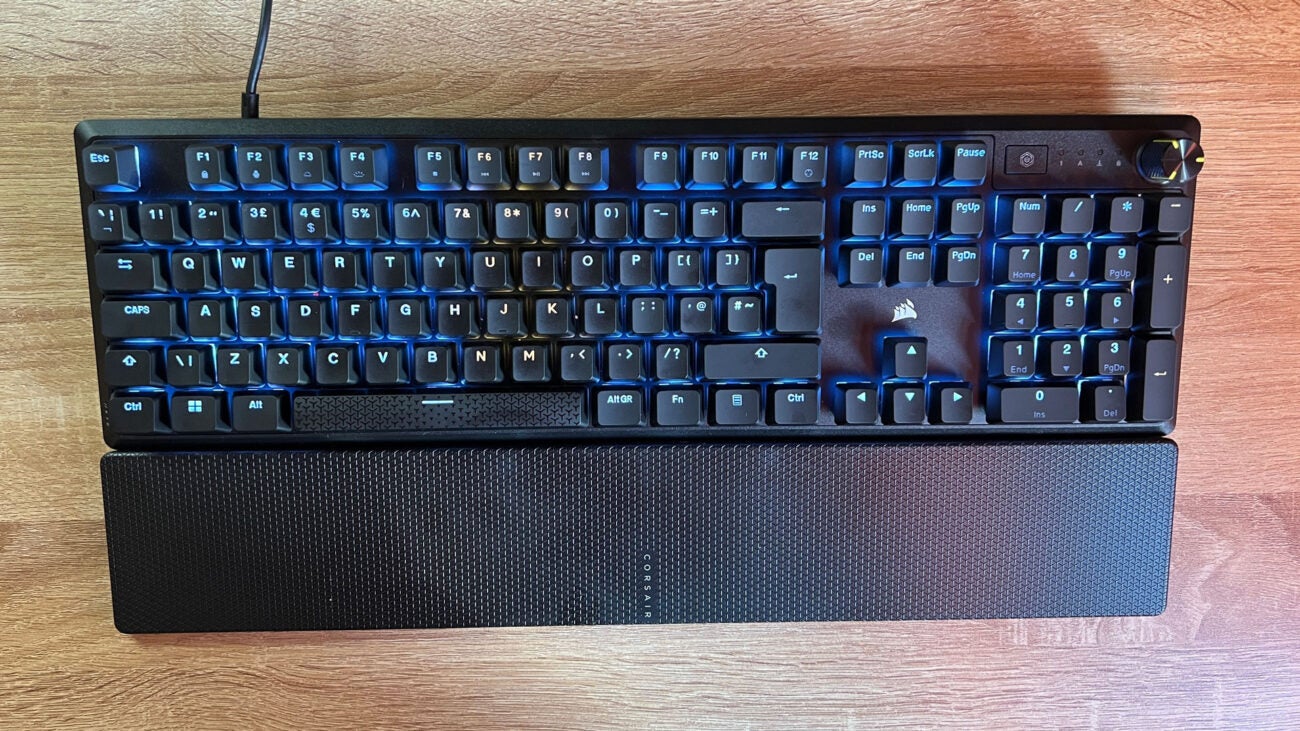
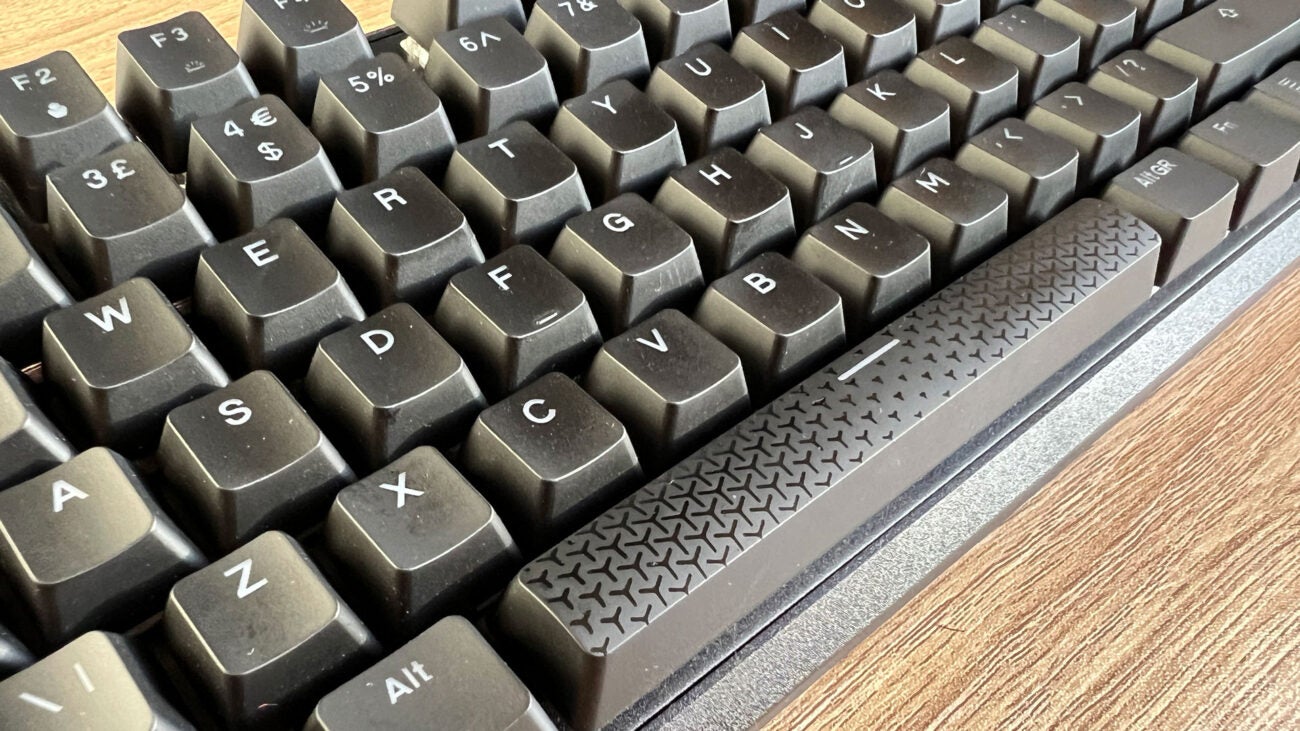
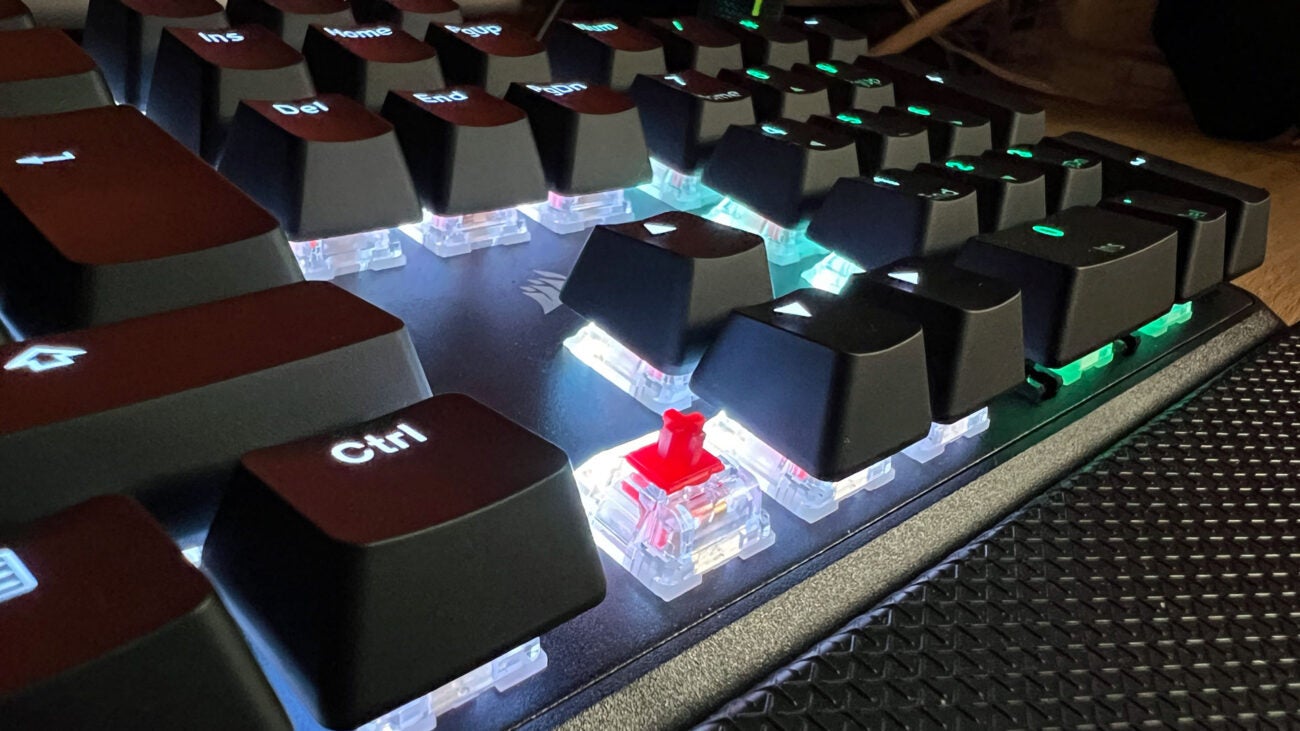

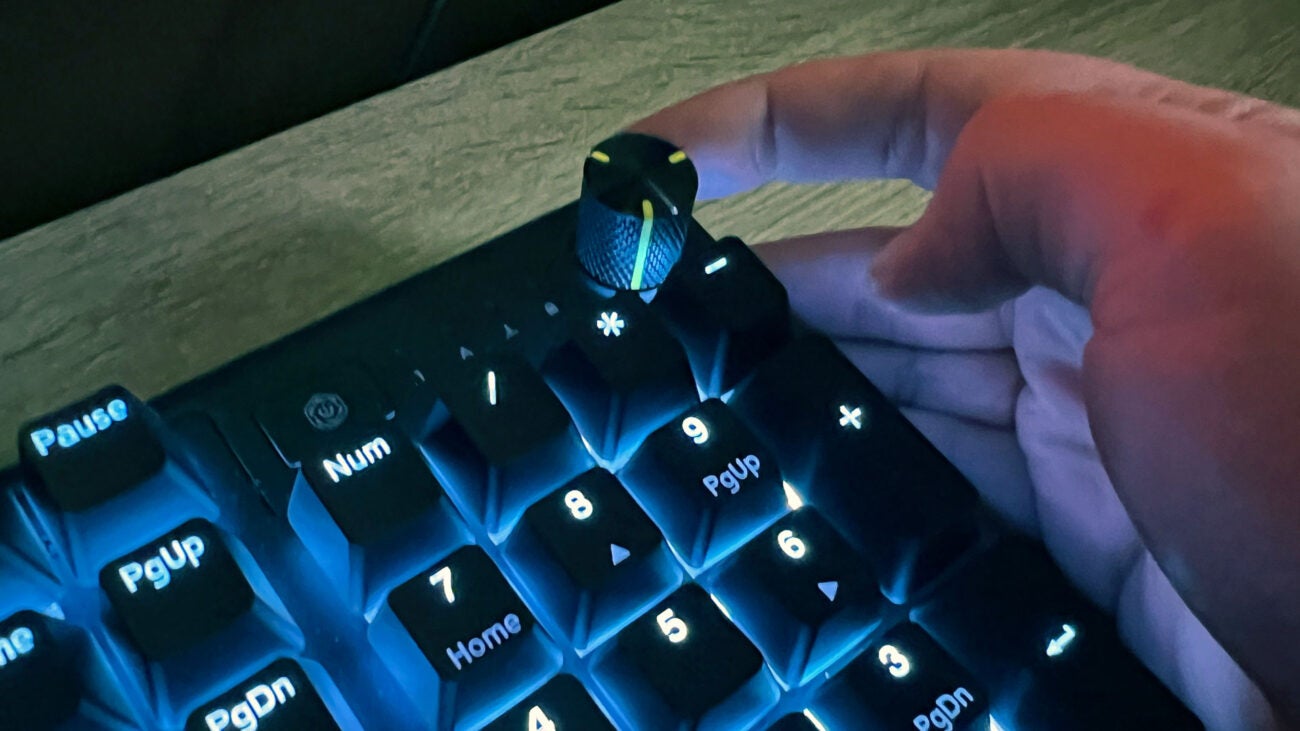

Verdict
The Corsair K70 Core could have been the quiet and comfortable mechanical keyboard to beat had its integrated cable at least been offset with a USB hub. It’s still a great value with enough carefully considered design choices to stand out, but if you’re after a clicky keyboard to integrate into an existing Corsair iCue setup, this isn’t the one.
Pros
- Sturdy chassis and quiet, lubricated Red Linear switches
- Assignable control dial
- Generous lighting options and swappable keycaps
Cons
- Keys don’t make for a great typing experience
- Dial isn’t smooth in operation
- Integrated cable and no USB hub
Key Features
- Quiet, pre-lubricated Red Linear switchesThe pre-lubricated Red Linear switches are quiet, fast, and hot-swappable.
- Control dialUsed for volume control by default, the clicky control dial can be reassigned to different actions.
- Generous RGB lightingBright RGB lighting can be controlled through iCUE software and various plug-ins
Introduction
The Corsair K70 Core keyboard is the brand’s latest take on a long-running series of wired boards, this time acting as a simmered-down version of the mammoth Corsair K70 Max.
Rejecting many of the expensive cutting-edge features that made the Max so costly, the Corsair K70 Core goes back to the drawing board. Gone are the magnetic hall-sense MGX switches and their adjustable actuation, but in their place isn’t just your run-of-the-mill gaming mechanical gaming keyboard.
Instead, lubricated switches make for quieter sessions, and a control dial stands to replace the clunky wheel of past iterations like the Corsair K70 RGB Pro, instead referencing something like the beloved work-oriented Logitech Craft wireless keyboard. Thankfully, the generously large and magnetic wrist rest hasn’t gone away.
Design
- Swappable keys and switches
- Wired connectivity
- Available both with and without wrist wrest
Available in two different colours from the get-go – a standard black affair and a slightly more retro-inspired steel grey look – the pitch-black Corsair K70 Core looks dark on my desk. Usually, I’d consider that a bad thing, but the bright RGB lighting beaming up both between the keys and through the lettering only stands to benefit from the difference in contrast.
There are a few keys where the illumination isn’t quite as uniform, though; typically when a letter is printed low enough on the keycap to uncover the central plastic stem underneath. It’s not nearly enough to stand out without purposefully looking for it. It won’t upend any RGB sequencing efforts that far exceed my own.
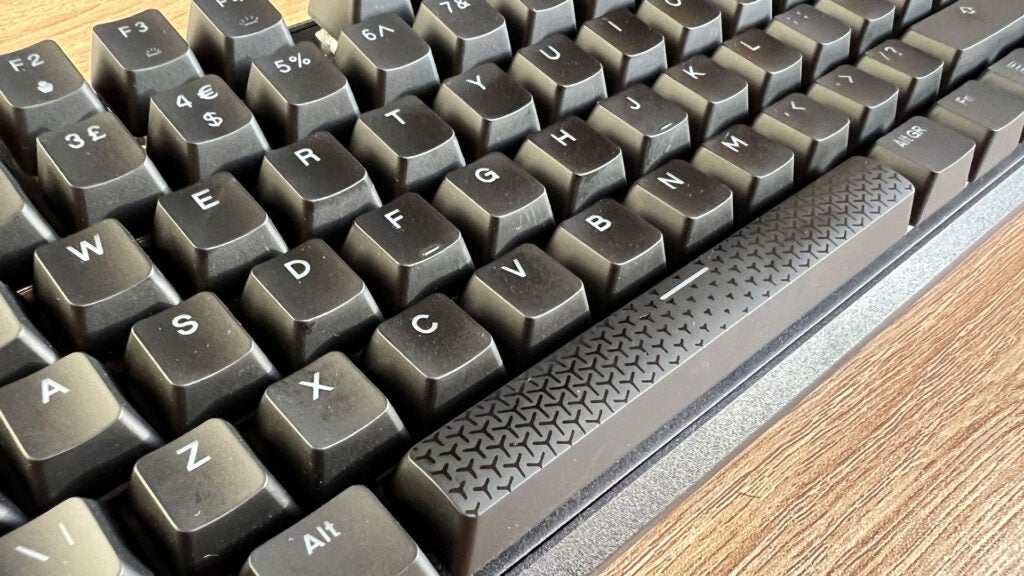
It’s a striking piece of kit. The patterned, non-textured space bar reflects some of the light, and the whole build is solid, resisting any twists and the push that comes with casual typing. There is a little bit of flex if you push down real hard, but not nearly enough to be of any concern. Slamming your hands (or head) down here won’t phase it. You might just see a key pop out.
And that’s because the Corsair K70 Core isn’t just a one-and-done typing and gaming solution. It’s entirely customisable. Though you won’t be able to change from that black or grey deck, you can spend another third of the asking price to personalise your board with double-shot keycaps after the fact.
Sure, the task of individually swapping out the keys of a full-sized board is a chore, but at least you can break away from the monochrome look with blue, white, green, red, black, and pink double-shot keycap options. Get two or more and you can really mix things up. Will it start to run you close to the cost of a hobbyist board? Sure. But if you want a quick and simple solution with iCue support for the rest of your equipment, it’s a great boon to Corsair’s catalogue.
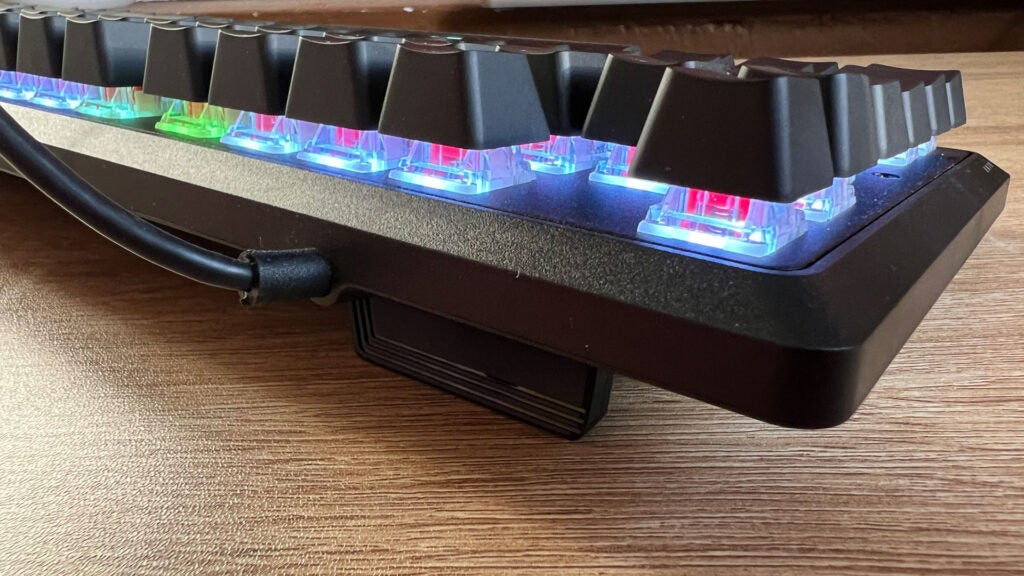
Being a full-sized board, the Corsair K70 Core can take up a lot of room. I tend to opt for 70% or TKL boards personally. With a numpad on my Corsair Scimitar Elite Wireless mouse, it just makes sense to cut that from the board to give my pointer more room to breathe. Even still, more keyboard means more RGB in this case. If that’s what you want, it’s a get.
It’s worth noting that this is an entirely wired keyboard. The rubber wire stemming from the top-left corner cannot be removed, which means it cannot be replaced should it break or you demand it fit in with the rest of your setup. Likewise, while you’ll find legs for adjustable height on the back, they only lock into place at full tilt, making minute adjustments difficult.
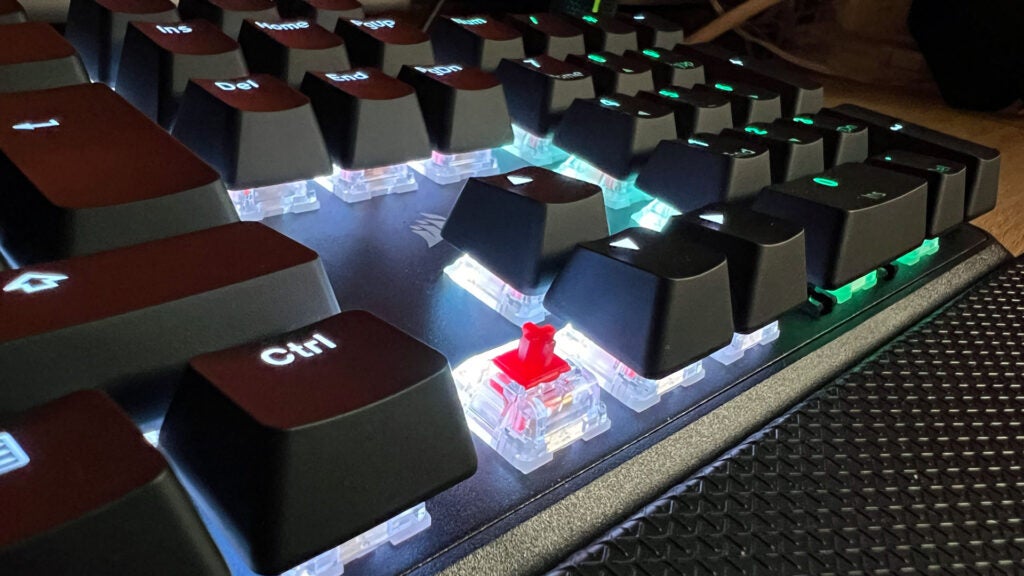
Available both with and without the generously large, comfortable, and wonderfully textured magnetic wrist rest found in a few other K70 boards, it’s worth springing for if you don’t already have a solution in mind. The magnetic attachment method is easy, reliable, and infinitely more durable than the flimsy plastic clasp that cursed the original. It’s even slim enough to sit a little further from the board, detached, while still serving its purpose.
Performance
- Features custom Corsair MLX Red linear switches
- Quiet for a mechanical keyboard
- Limited to a 1000Hz polling rate
The Corsair K70 Core rocks custom Corsair MLX Red linear switches. They’re not too far from the keys used in the original K70 board all those years ago. The foundations are there, but the feel is totally different. My biggest complaint with the original was that it felt almost like a toy. Thin, flimsy, and needlessly noisy.
The K70 Core’s lubricated switches slide down with little force, actuating when you’d expect, and with very little noise next to something like the instantly recognisable, unapologetically ultra-clicky green switches of the Razer Blackwidow line. It’s not always what people want from a mechanical keyboard. More noise is synonymously attributed to a more tactile clack. But if you want to game well into the night or simply don’t want those on voice coms know exactly when you’re giving it your all, the tradeoff here could very well be worth it.
Where it won’t make a massive amount of sense, however, is if you’re an avid typist. The smooth movement of the Corsair K70 Core’s keys can feel a little sluggish at times, like you’re pushing them through a little bit of mud. Again, they actuate just fine, and I had no issue getting up to speed while drafting this review or bashing out a few frenetic matches of Overwatch 2.

But if you do need that tactile bump as you rattle out your words, you may start to second-guess your touch-typing talents with this one. It’s not the best typing experience out there, nor does it claim to be.
Again, this isn’t the scratchy clack experience of the older K70 boards. Unless you’re quite heavy with the keys, you won’t get that audible bump as the keys bottom out. If you do need tactile feedback as you play, you’ll probably want to look at something like the Razer Huntsman V2 instead. For a smaller version with handy analogue options, there’s the Razer Huntsman Mini Analog.
Supporting all the major keyboard failsafes you’d expect, like anti-ghosting key rollover and IN Lock, there’s also only 1000Hz polling on offer here. You may think that could hold you back if you’re running a 2000Hz mouse like the Corsair M75 Air or even the 8,000Hz Razer Viper V3 Hyperspeed, but you’d be wrong.
With every single minute movement picked up by a mouse, it’s wholly necessary there. On a keyboard, you’re not pressing those buttons fast or often enough to need anything more.
Software and lighting
- Over 100 RGB LEDS in the keyboard
- Configurable with Corsair’s iCUE software
- Adjustable actuation settings
With well over a hundred little RGB LEDs stuffed into the deck, it isn’t surprising to see that the Corsair K70 Core is well-equipped to blast the colours of the rainbow into your gaming space.
Powered by Corsair’s complicated iCUE software, you’re free to set endless profiles on your machine of choice that you can cycle through with dedicated function keys. As for when it’s turned off, onboard profiles allow the K70 Core to flaunt its stuff regardless.
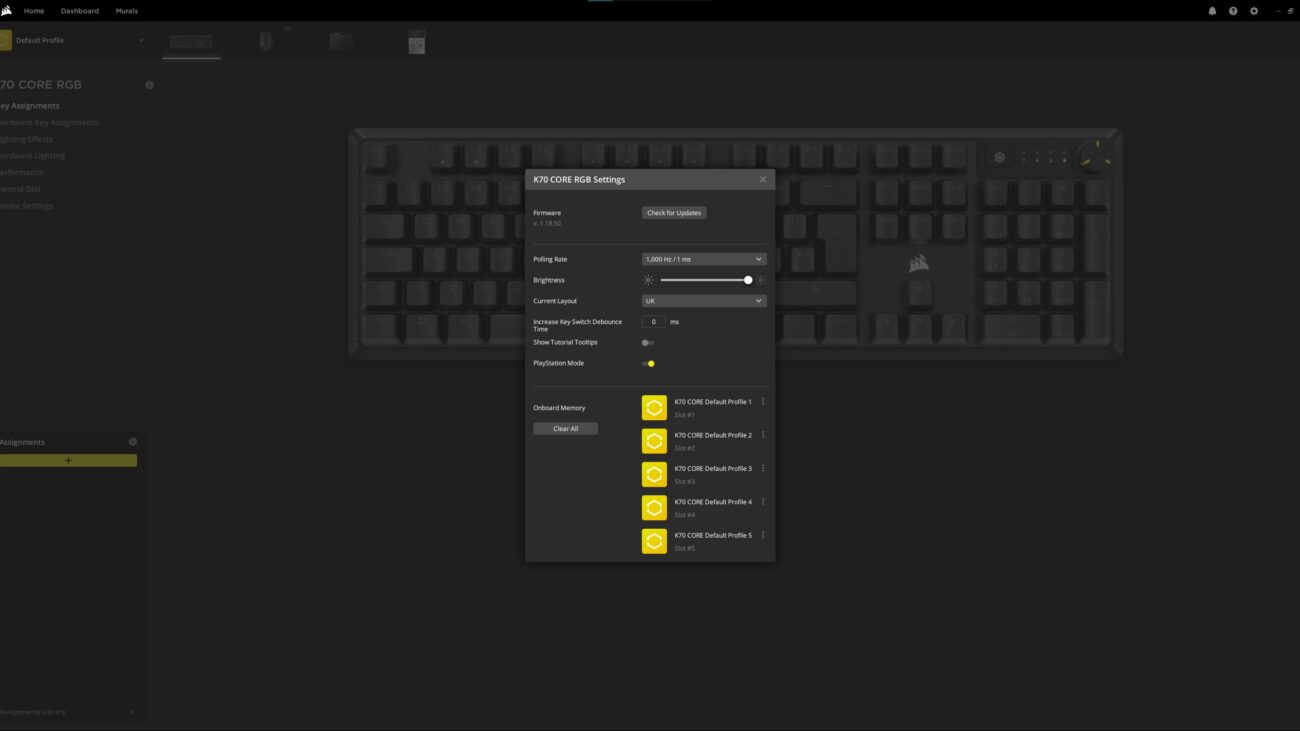
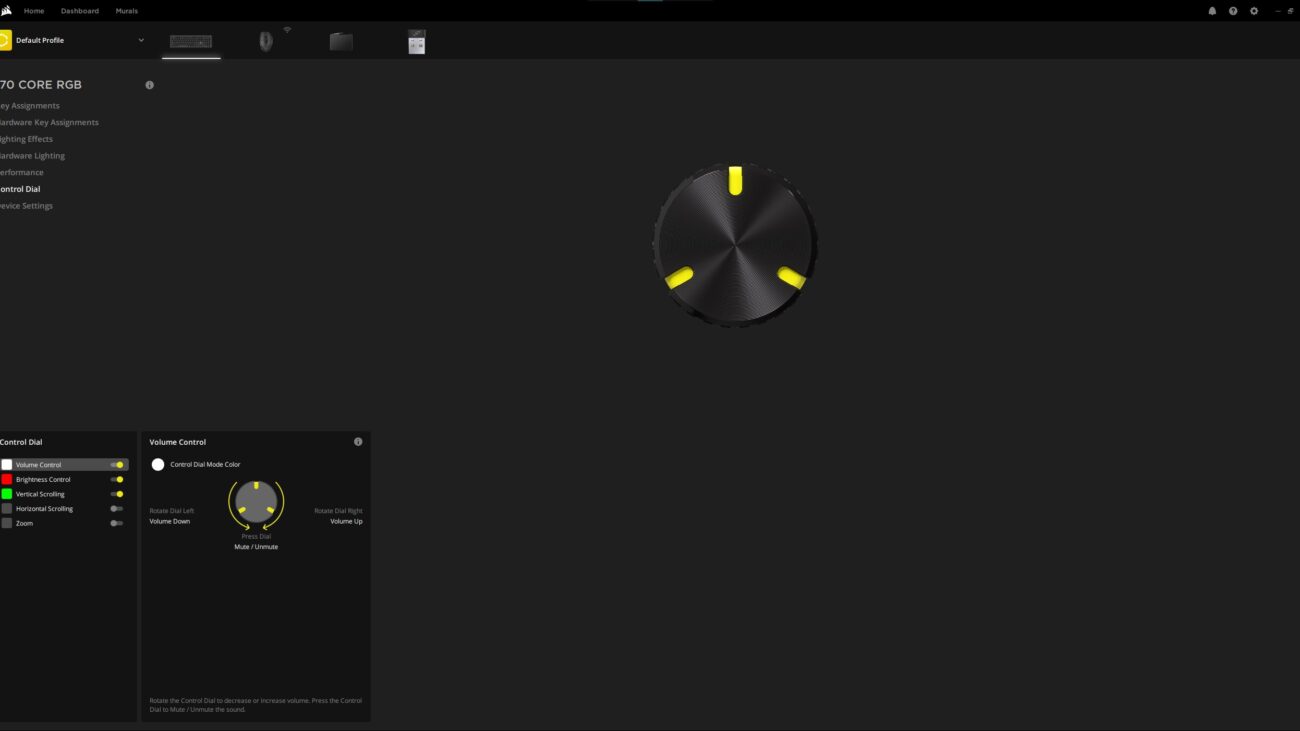
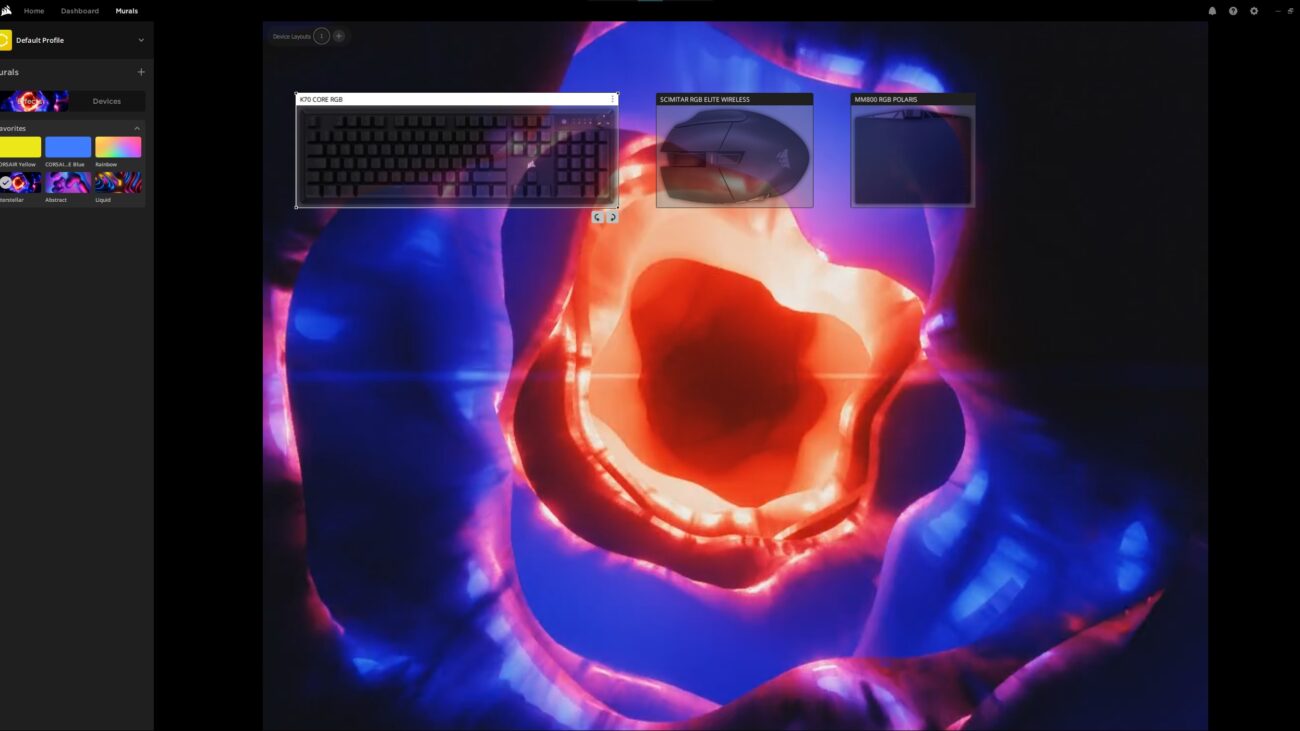
On top of the usual presets you expect from most addressable RGB peripherals these days, Corsair goes above the standard lot with what it calls Mosaics. These are more elaborate, thoughtfully planned and themed lighting patterns you can activate with a click. There’s even a store for picking out more, created by the community and curated by Corsair. They’re a welcome change from the usual lot and a far sight more pleasing to look at as well.
Outside of that, there isn’t a massive amount to touch base on here. Unlike a mouse, there isn’t a whole lot to be tweaked when it comes to a keyboard’s raw performance. What will entice some tinkering, however, is the adjustable actuation settings that can command exactly when a pressed key sends its crucial signal.
If you’re not the sort to half-press a key in swift anticipation, you’ll see the benefit of having your movement register before you’ve even fully slammed down on a key. Movement keys aren’t a great choice for this unless you’re hyper-disciplined, but for the likes of reload, melee, grenade, and crouch, the minute change can theoretically make a huge difference. It’s a tangible gimmick that might actually mean a lot to the right person.
Latest deals
Should you buy it?
You want a quiet, full-sized mechanical keyboard with great support
With coloured keycap options to entice casual tinkerers and swathes of RGB options, this quiet keyboard is a great option.
You want a lightning-fast keyboard with plenty of tactile feedback
The quiet and lubricated red switches, while fast, aren’t nearly as clicky as many other options out there, which can lead to a less satisfying gaming and typing experience.
Final Thoughts
The Corsair K70 Core keeps enough of its great feature-set to stand out on today’s busy store shelves, despite a lowered price. Mesmerising RGB support through iCUE is a major selling point for many, but it’s the quiet, lubricated Red switches that will be the deciding factor for most.
It’s a great option for those who want the advantages of a mechanical board without all the noise of boards like the Razer Blackwidow V4 Pro. And with keycap options enabling heavy-handed customisation efforts, it’s both replaceable and personable.
Despite all that, the control dial is far from smooth in operation, causing a bit of a divide between the sensory experience of using the board. It’s also on the large side, which won’t suit every setup. For a cleaner setup, the cheaper siblings to the Keychron Q1 Pro are astounding value alternatives. And if it’s just the dial you’re after, the JLab Epic Wireless could be a better pick, with the Logitech Wave Keys being a better all-round typing experience for the price. Check out our Best Gaming Keyboard guide for more options.
How we test
We use every keyboard we test for at least a week. During that time, we’ll check it for ease of use and put it through its paces by playing a variety of different genres, including FPS, strategy and MOBAs.
We also check each keyboard’s software to see how easy it is to customise and set up.
Used as a primary keyboard for a week.
Used in a variety of games and office applications and scenarios.
Compared to various other keyboards with similar features around the budget, mid-range, and high-end price bracket.
FAQs
Corsair sells compatible keycap kits that allow you to change the K70 Core keys to various colours.
No, the Corsair K70 Core doesn’t have any extra USB ports for you to use.
No, the Corsair K70 does not include any dedicated macro keys, but most can be reassigned to suit a given purpose.








